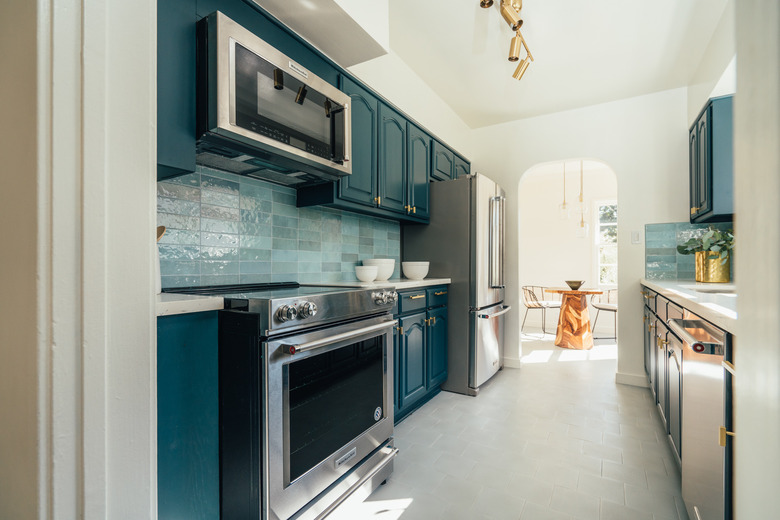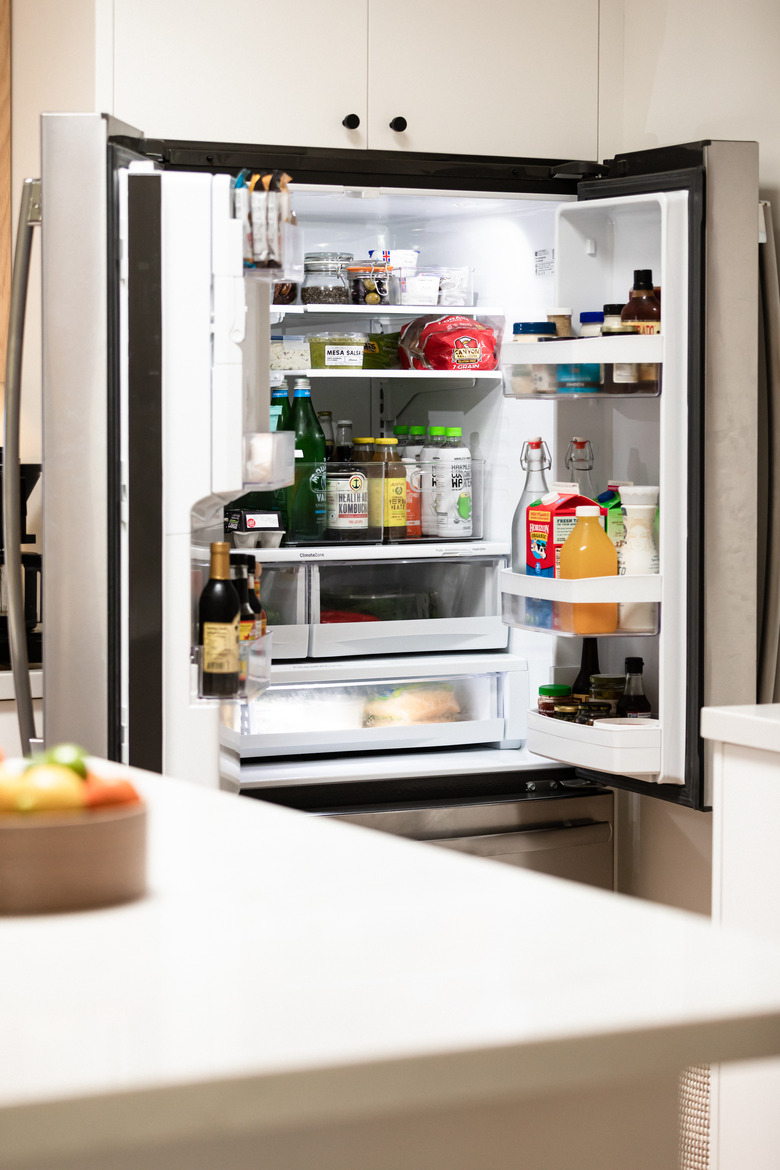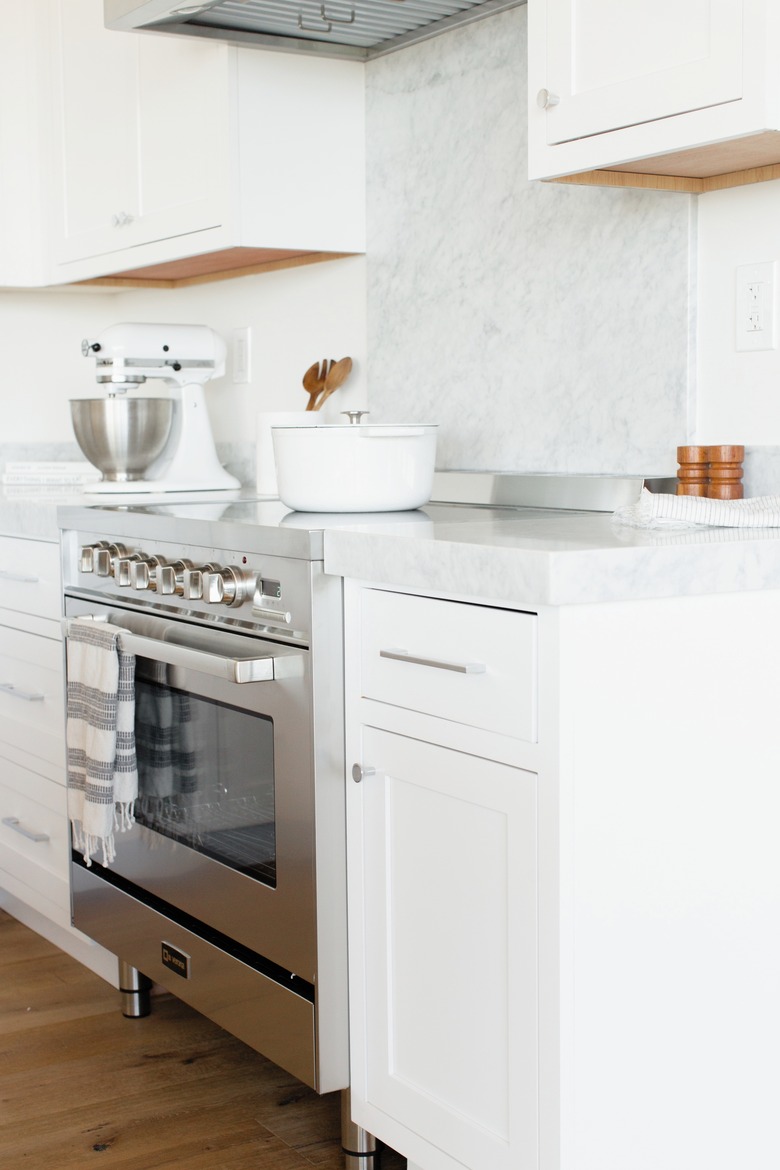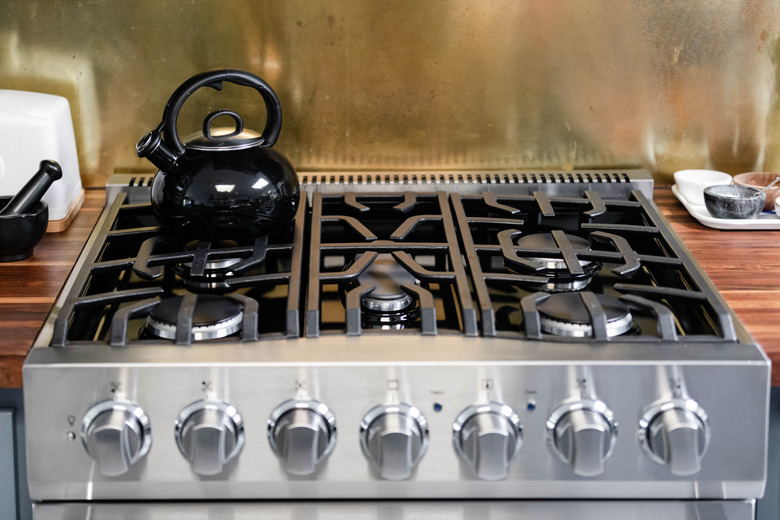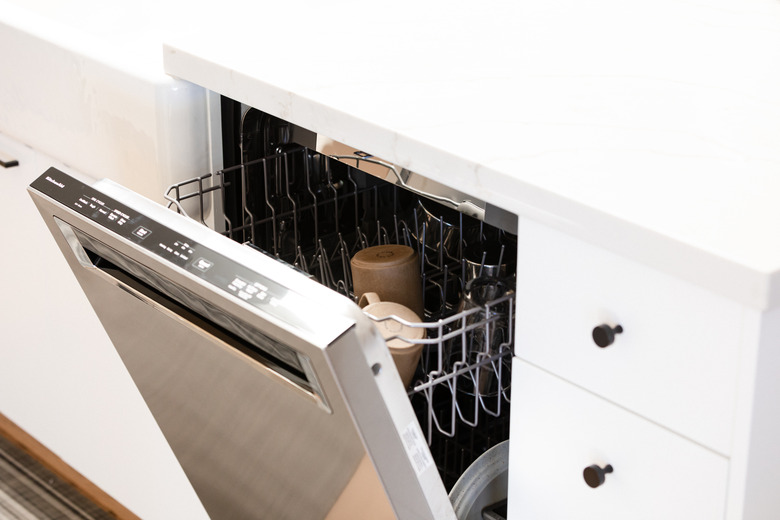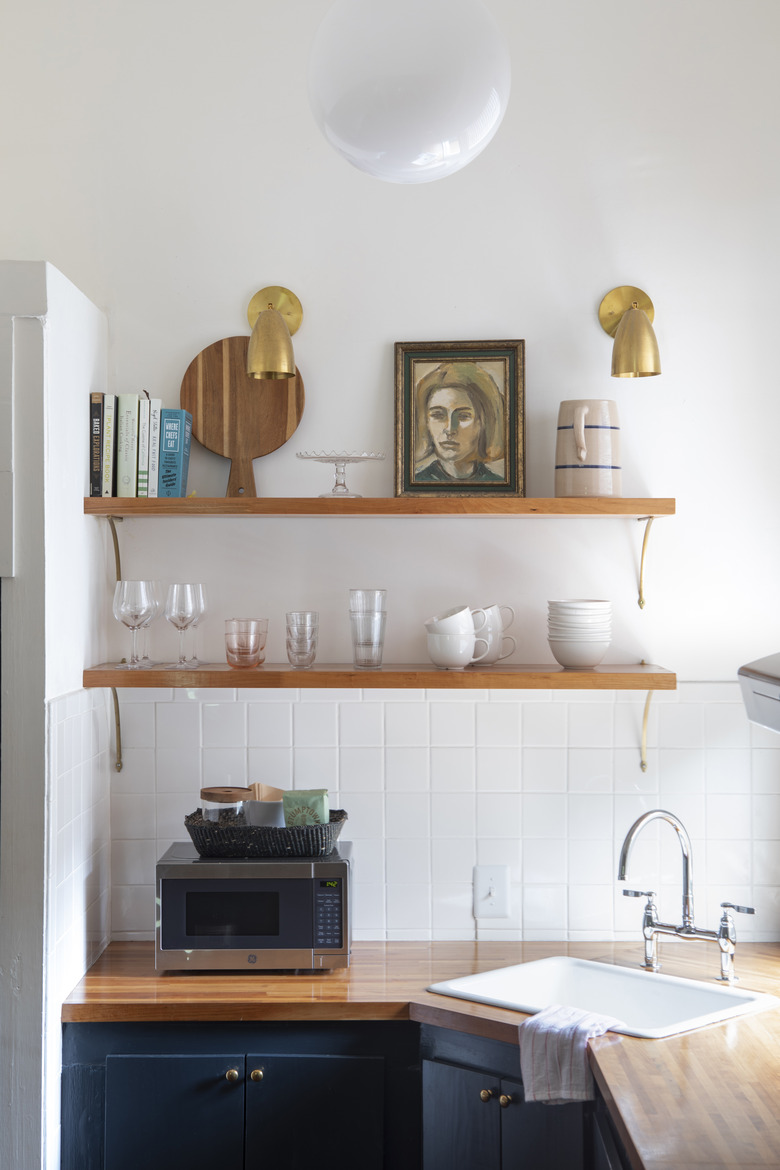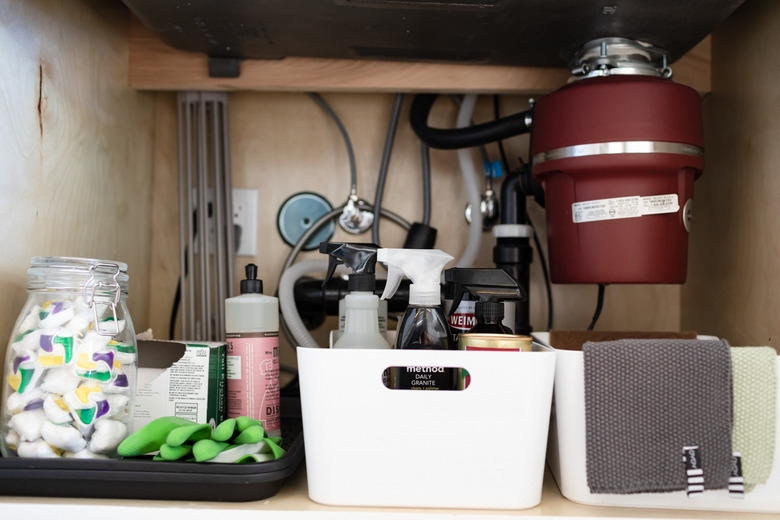How To Choose The Best Kitchen Appliances
When planning your remodel or just refreshing your kitchen appliances, remember to think about your new kitchen appliances. Luxurious granite countertops and snazzy kitchen island light fixtures are fun and can easily overwhelm something as blase as a garbage disposal. Appliances are the backbone of the kitchen, however, and their functionality is as important as how your new kitchen looks. Choosing wisely means marrying both form and function.
General Kitchen Appliance Tips
General Kitchen Appliance Tips
The specific features for which you'll want to look vary from one appliance to the next, but there are a few general tips that work for all of them. The first is to go with a trusted name. Well-known appliance manufacturers like Bosch, Maytag, Samsung, KitchenAid and Whirlpool have dominated the appliance market for years and all have excellent reputations. They also have large networks of authorized repair centers that can help you with technical service, repairs and maintenance.
It's also important that you measure everything when you are appliance shopping. If you live with hungry teenagers, for instance, that oversized refrigerator may look mighty tempting. You may even have more than enough room for it in your kitchen — but will it fit through your front door?
Before you go kitchen appliance shopping, take a deep breath and think about your budget and the way you actually use your kitchen. There is nothing wrong with paying a little extra for a special feature you'll use often, but don't get caught up in shiny bells and whistles you don't really need. Yes, wine fridges are super cool, but if you only drink six bottles a year, they'll get just as cold in a standard refrigerator.
Kitchen Appliances: Color and Finishes
Kitchen Appliances: Color and Finishes
Once found in most kitchens, white kitchen appliances are less popular than they once were. They still have their place, however, and work well in white or light-colored kitchens as well as small kitchens that lack natural light and need a little brightening. If you have dark cabinets or countertops, black is a much better choice. Black works well in large kitchens and is available in matte finishes to hide smudges and fingerprints. You can add black appliances to a white kitchen for contrast, but do so only if white and black are the only two colors in the space.
Like black appliances, stainless steel options also come in a shiny or matte finish to hide fingerprints. Quite versatile, stainless adds a sleek look to modern kitchens and breaks up the monotony in traditional kitchens that feature a lot of wood.
If you're feeling fancy and going with a high-end remodel, you can also get appliances with paneled doors that match your cabinet faces. This option is expensive, however, so consider it only if you have a healthy budget. If you're brave, you can throw caution to the wind and choose bright appliances in colors like red or blue. Bold colors lend a modern feel, while muted pastels work for a retro look.
Choosing a Refrigerator
Choosing a Refrigerator
When picking a refrigerator, its layout is perhaps the most important choice. You can choose a traditional style with the freezer on top or the more modern approach with the freezer on the bottom. French door refrigerators are also an option, with the freezer on one side of the appliance and the refrigerator on the other.
The main factors are space and convenience, as all refrigerator styles are available with an Energy Star rating that denotes an energy-efficient unit. According to Remodelista, a freezer on the bottom is the way to go if your main concern is putting your oft-used fridge at a convenient height, but French doors are narrow and work best when space is tight.
Refrigerator must-haves include clear crispers and bins as well as adjustable shelves. Roll-out drawers are convenient in both the refrigerator and the freezer, and built-in ice makers are fairly standard today. Ice and water dispensers on the door are also handy, and you can opt for a fridge that dispenses filtered water for improved taste.
Steer clear of smart fridges, however. A fridge that connects to your devices with Wi-Fi and lets you peer into it from your cell phone sounds pretty sweet, but more tech just means a higher price tag and more gadgets that could break.
Your Oven Options
Your Oven Options
Modern chefs have the option of installing a separate wall oven or going with the tried-and-true range option. Wall ovens sit at a convenient height, making it easier to get heavy dishes like the Thanksgiving turkey in and out of the oven. They take up more space than a range, however, and are harder to install if you are DIYing your kitchen remodel.
Whenever your budget allows it, always opt for a self-cleaning oven, but don't go for one that cleans itself with steam. These don't work as well and tend to clean only the bottom portion of the unit while doing a poor job on the top. Consider too how the oven cooks. Convection ovens use circulating heat to cook food quicker, which helps busy cooks. Those who bake often, however, tend to prefer a regular oven.
If you want the best of both worlds, you can get one of each. Double ovens are very popular in modern kitchens and let you have your cake and eat it too. Two ovens are great when the budget allows, but again, it's important to think about how you use your space. If you often find yourself wishing for a second oven, get one. If you only lament your lack of extra ovens once a year when cooking Christmas dinner, a second oven probably isn't worth the money.
Deciding on a Cooktop
Deciding on a Cooktop
Cooktops run on electricity or gas. The choice between the two might be made for you if your home isn't already connected to a gas line. If that's the case, you can choose an electric cooktop or pay to have a gas line run from the street to your home. According to HomeGuide, the average cost to do so in 2020 is about $2,000. Note that this isn't an option in all areas.
When choosing a gas cooktop, consider burners that feature both an inner and outer flame. These burners give you superior control over cooking temperatures, allowing you to easily choose between a slow simmer or a full boil. When it comes to electric cooktops, you can choose traditional burners or opt for a newer glass-top style. These smooth tops make for easier cleaning, but sliding pots and pans on them can result in permanent scratches. The cost is about the same, however, so this option comes down to personal preference.
You will, however, likely pay a bit more for an induction cooktop. Many homeowners feel they're well worth the cost, however. Induction cooktops stay cool to the touch, making them a safer option. Induction cooking only works with magnetic pots and pans, so your new cooktop may also serve as an excellent excuse for buying new cookware.
According to GE Appliances and others, you shouldn't use an induction cooktop if you have a pacemaker. The magnetic field created by induction cooking could interfere with your device.
Making Dishwasher Decisions
Making Dishwasher Decisions
Modern dishwashers are more flexible than ever before, offering adjustable racks, energy-efficient cycles and extra insulation for quieter use. You can also choose to have buttons on the front of the unit or on the top where they're hidden when the dishwasher is closed. All of these features are fairly standard, but you can spring for a few extras if you like.
One option is to purchase a dishwasher that connects to a cold water supply line only and then heats the water itself. This leaves plenty of hot water in your water heater tank for showering or cleaning. Given that most dishwashers now run quietly and offer a delayed start option, this feature seems a bit unnecessary. After all, it's just as easy to delay the dishwasher's start time until after the kids have had their bath and gone to bed, and you no longer need to worry about a loud dishwasher waking them.
Some dishwashers now come with a large detergent reservoir as well. Instead of adding detergent before every load, you instead fill the detergent dispenser, which usually holds about 45 ounces, and let the dishwasher dispense the right amount automatically. This is a convenient feature but not one for which you should pay extra. After all, you still need to remember to fill the detergent cup, and this system doesn't work with popular premeasured detergent pods.
Selecting a Built-In Microwave
Selecting a Built-In Microwave
Built-in microwaves are an excellent space saver since they don't eat up any of the precious real estate on your kitchen countertops. You can install a built-in microwave over your cooktop, under your kitchen cabinets or within your kitchen cabinets. The most important features for which to look in a microwave are size and wattage. You want your microwave to have adequate usable space, so bigger is generally better. The higher the wattage, the more quickly and evenly your food will cook, so don't skimp here either: Around 1,200 watts is ideal.
If you can afford it, it's worth paying a bit extra for inverter technology. With it, your microwave can actually reheat leftovers at an even 50 percent heat setting if desired. Otherwise, your microwave will alternate between 100 percent and 0 percent for a 50 percent average, which doesn't heat food nearly as well.
Think twice before choosing a microwave that can serve as a broiler or a convection oven. You'll pay extra for these features, and most people never use them. If you're like most people, you'll use your microwave to nuke some leftovers or make some popcorn. It doesn't need to double as an oven; you already have one of those.
Garbage Disposal Thoughts
Garbage Disposal Thoughts
When it comes to the garbage disposal, your first decision is whether or not you want one. Garbage disposals are an excellent way to get rid of organic waste that can quickly become stinky trash during the hot summer months. If you compost, however, you may find that you don't have much need for a disposal.
Once you've decided that you do want a garbage disposal, look for one with stainless steel construction and choose a model with a minimum of two-stage function (three-stage is even better if your budget allows). A two-stage unit grinds food better than a single-stage one, reducing the chance of clogs. A two-stage stainless steel unit may cost a little more, but it also reduces the risk that you'll need a plumber to come and unclog your drain.
If you've used a garbage disposal before, you know that they're quite loud. Quieter models are now available, but quieter doesn't necessarily mean quiet. You can buy a model that reduces noise by 30 to 60 percent. While this reduction is significant, you still won't want to use the appliance while the baby is napping or your favorite TV show is on. Given the short amount of time a disposal runs, this feature probably isn't worth shelling out extra cash.
References
- Remodelista: Expert Advice: How to Choose the Right Kitchen Appliances, Part I
- HomeGuide: How Much Does It Cost To Install Or Repair A Gas Line?
- GE Appliances: Pacemakers and Induction Cooktops EMF (Electromagnetic Field) Questions
- Lowe's: How to Choose the Best Finish for Your Kitchen Appliances
- Cook Smarts: How I Chose My Kitchen Appliances
- Imagineer Remodeling: An Insider's Guide to Choosing Kitchen Appliances
- CDA: How Does Induction Cooking Work?
- Wayfair: 5 Tips for Picking the Right Garbage Disposal
- CNET: How to Buy a Microwave
